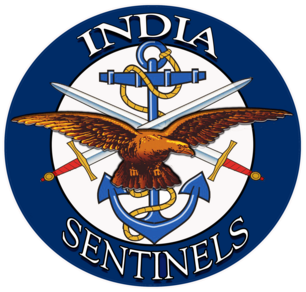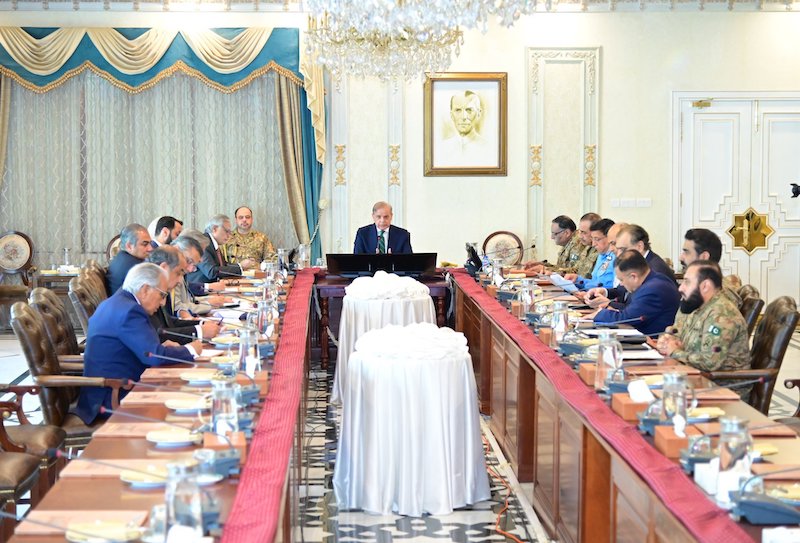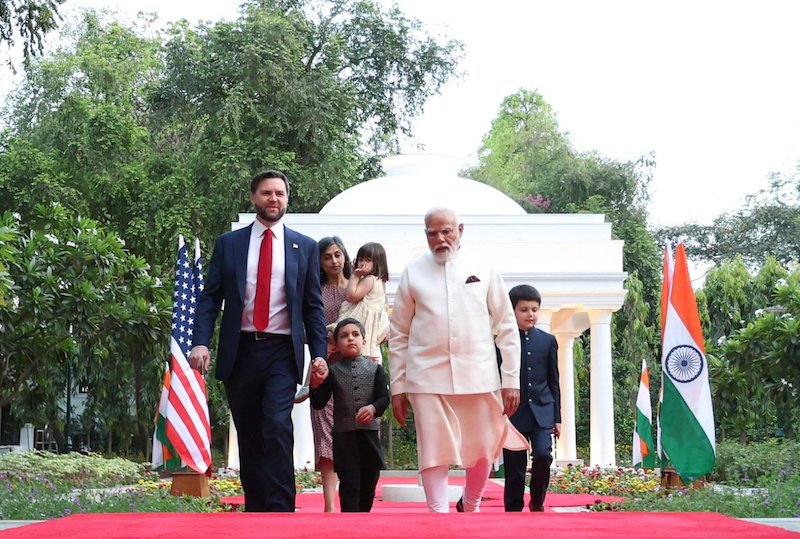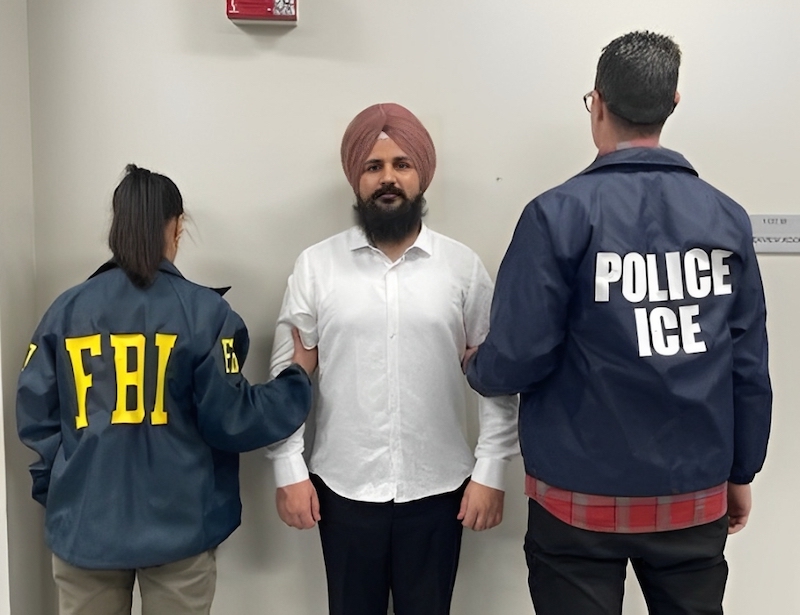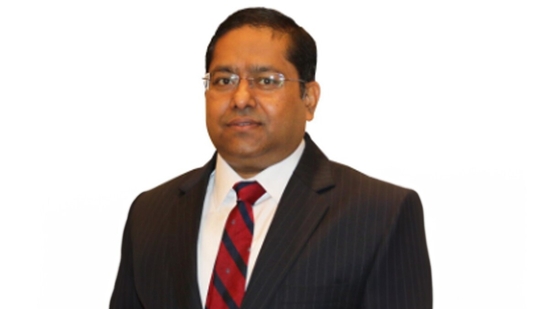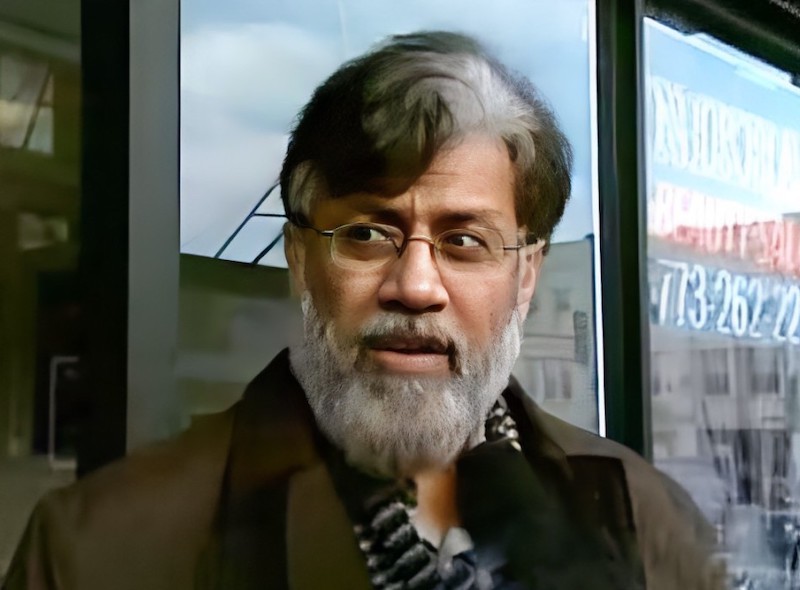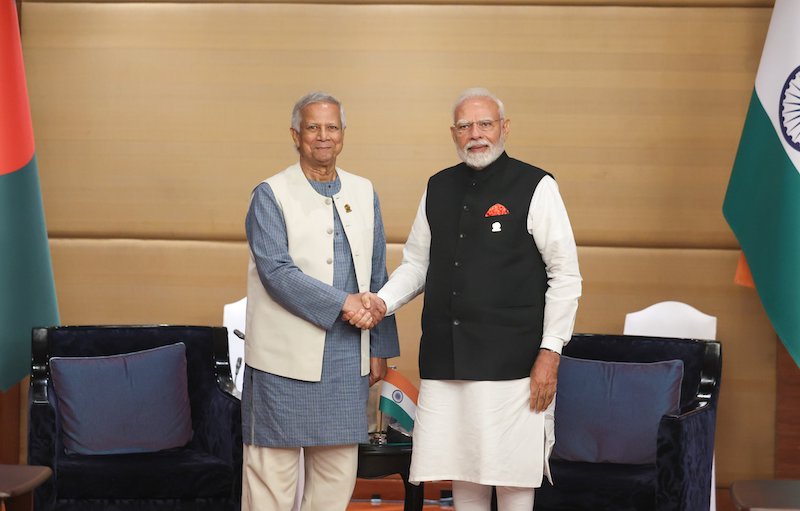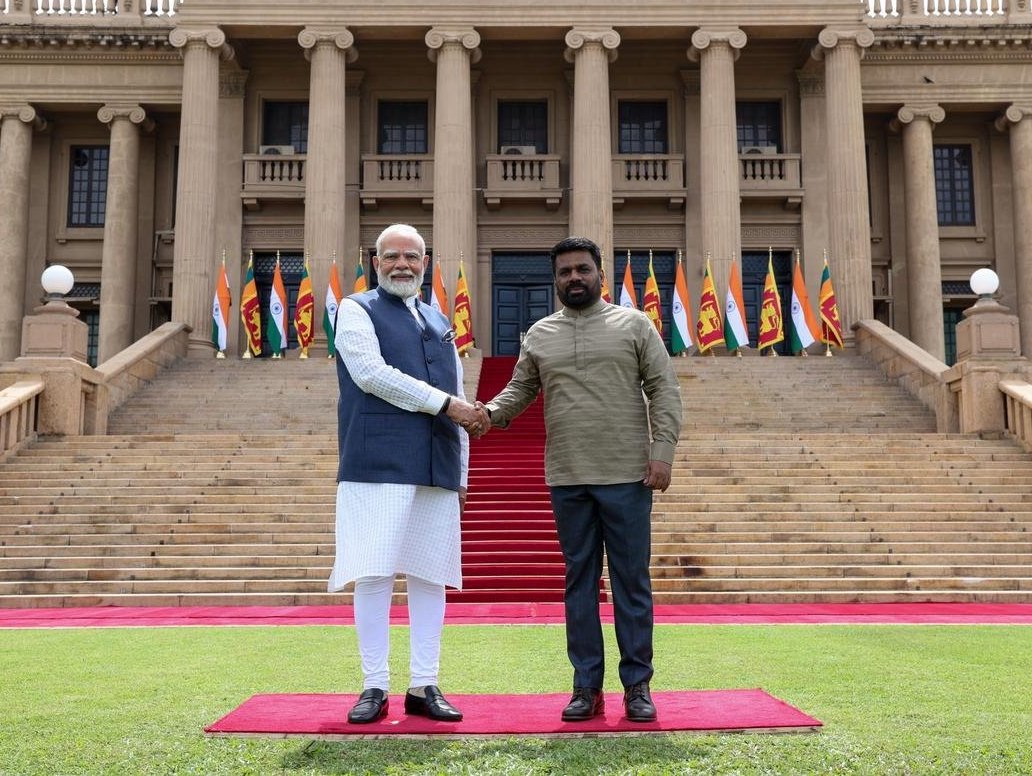 Narendra Modi with Anura Kumara Dissanayake. (Photo: X/@narendramodi)
Narendra Modi with Anura Kumara Dissanayake. (Photo: X/@narendramodi)
New Delhi: The prime minister, Narendra Modi, began a three-day visit to Sri Lanka on Friday. On the second day of his visit, the two countries signed a defence cooperation agreement, which marks an important development in the bilateral relations between the two Indian Ocean neighbours. The trip, which started after Modi’s return from the 6th BIMSTEC Summit in Bangkok, is scheduled to end on Sunday.
The second day of Modi’s visit to the island nation included formal ceremonies and the signing of several agreements that enhance India’s strategic position in the region.
Historic Defence Pact
The defence cooperation pact – the first of its kind between India and Sri Lanka – represents a major diplomatic achievement for New Delhi amid growing Chinese influence in the region. The agreement establishes a comprehensive framework for enhanced military collaboration, including joint training exercises, intelligence sharing, and technology transfer.
Defence analysts note that the pact will enable India to provide advanced training to Sri Lankan armed forces while facilitating coordinated maritime security operations in the strategically vital Indian Ocean region. The agreement also includes provisions for regular high-level defence dialogues and joint naval patrols to counter illegal activities, such as smuggling and terrorism.
Held extensive and productive talks with President Anura Kumara Dissanayake in Colombo. A few months ago, President Dissanayake chose India as the place for his first overseas visit after becoming President. Now, I have the honour of being the first foreign leader he is hosting… pic.twitter.com/dQnGZVcClW
— Narendra Modi (@narendramodi) April 5, 2025
“This defence partnership elevates our relationship to new heights and demonstrates our mutual commitment to regional stability,” Modi said during the signing ceremony on Saturday. He emphasized that the agreement would serve as a cornerstone for enhanced security cooperation while respecting Sri Lanka’s sovereignty.
Sources within the Ministry of Defence indicate that the pact may include a significant line of credit for Sri Lanka to purchase Indian military equipment, although specific financial details remain undisclosed. The arrangement potentially offers Sri Lanka access to Indian-made defence systems, including coastal surveillance radar, patrol vessels, and training aircraft.
Read also: Modi meets B’desh’s Yunus, signals potential thaw in New Delhi-Dhaka ties
Grand Ceremonial Welcome
Modi was accorded a rare ceremonial reception at Sri Lanka’s Independence Square in Colombo – an honour never before extended to a foreign dignitary. The president of Sri Lanka, Anura Kumara Dissanayake, personally received the prime minister at this historically significant venue, symbolizing the exceptional importance attached to India-Sri Lanka relations.
Despite heavy rain on Friday evening, hundreds of locals and members of the Indian diaspora gathered at Colombo’s Bandaranaike International Airport, where Dissanayake had sent five senior ministers of his cabinet, including his foreign minister, Vijitha Herath, and his health minister, Nalinda Jayatissa, to receive Modi.
Energy Security and Regional Development
Beyond defence cooperation, the visit produced substantial agreements in energy cooperation and regional development. Modi and Dissanayake jointly inaugurated the Sampur solar power project virtually, on Saturday, representing a significant advancement in renewable energy collaboration. The project, developed by India’s National Thermal Power Corporation (NTPC) and Sri Lanka’s Ceylon Electricity Board (CEB), has an initial capacity of 50MW with plans to expand to 120MW.
During the inauguration, Modi noted: “The Sampur project demonstrates our commitment to supporting Sri Lanka’s green energy transition.” The solar farm incorporates advanced battery storage systems to manage fluctuations in power generation, which will establish a model for future cross-border energy initiatives.
Another key agreement focuses on developing Trincomalee as a regional energy hub. This initiative aims to transform the strategic port city into a centre for power generation and distribution, addressing Sri Lanka’s ongoing energy challenges while enhancing India’s energy security footprint in the region.
Comprehensive Assistance Package
India also committed to providing multi-sectoral grant assistance to Sri Lanka’s Eastern Province, which will support developmental projects across education, healthcare, and infrastructure. This assistance package builds upon the nearly $4 billion in financial support India provided during Sri Lanka’s 2022 economic crisis.
Seven additional memorandums of understanding (MoUs) were signed during the visit, covering:
- Implementation of HVDC interconnection for power import/export
- Sharing digital solutions for population-scale digital transformation
- Cooperation in health and medicine
- Pharmacopeial collaboration between Indian and Sri Lankan health agencies
- Multi-sectoral grant assistance for Eastern Province
- Collaboration on renewable energy projects
In recognition of Modi’s contributions to bilateral relations, Dissanayake conferred upon him Sri Lanka’s highest civilian honour, “Mithra Vibhushan’ – a gesture that underscores the deep mutual respect between the nations.
Strategic Implications
This visit, Modi’s fourth to Sri Lanka as Prime Minister, comes at a critical juncture as both nations navigate complex regional dynamics. India’s proactive engagement with Sri Lanka reflects New Delhi’s “Neighborhood First” policy and its determination to maintain primacy in South Asian affairs.
The defence pact in particular represents a strategic counterbalance to China’s growing presence in Sri Lanka, which has included major infrastructure projects under the Belt and Road Initiative. Beijing’s acquisition of the Hambantota port on a 99-year lease in 2017 had raised concerns in New Delhi about potential military use of Sri Lankan facilities by Chinese forces.
Foreign policy experts suggest that the timing of these agreements, coming shortly after Dissanayake’s election, indicates both nations’ desire to reset bilateral relations that had occasionally been strained under the previous administration.
Speaking at yesterday’s joint press conference, Modi reaffirmed India’s commitment as a “reliable partner” in Sri Lanka’s development journey. “Our destinies are interlinked by geography, history, and shared values,” he stated. “We stand ready to work with Sri Lanka as it charts its path toward prosperity and stability.”
The agreements being signed during this landmark visit are expected to significantly shape regional dynamics while addressing critical issues of mutual concern, cementing India’s position as the predominant partner for Sri Lanka in its development and security architecture.
